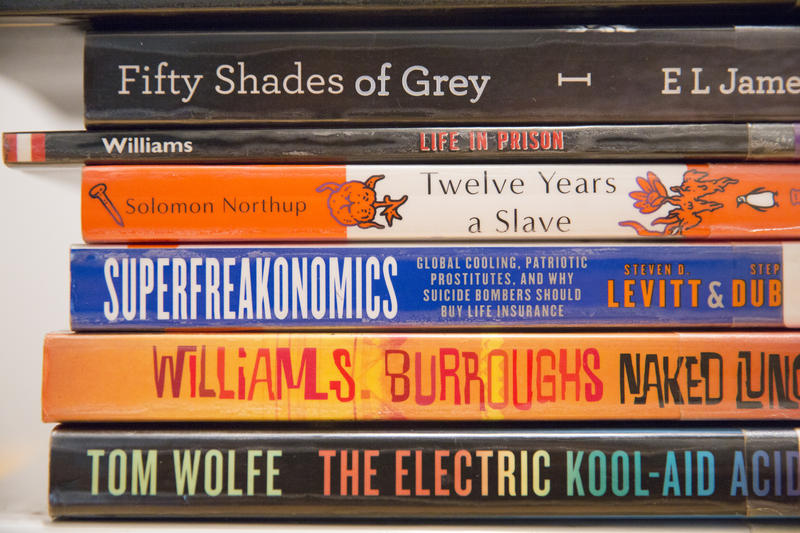
Accident reported on I-435 to eastbound I-70

Serving Kansas City (Wyandotte County) Kansas for over 50 years!

The BPU Employee Charity Golf Corp. will hold its Annual Charity Golf Tournament on Saturday, Sept. 7, at Dub’s Dread Golf Course in Kansas City, Kansas.
As part of its ongoing commitment to the community, BPU employees hold this annual golf event which, to date, has raised over $580,000 for children’s charities and nonprofit organizations that benefit children and youth in Wyandotte County.
Proceeds from this year’s tournament are earmarked for the KC Blind All Stars Foundation, Giving the Basics and Young Women on the Move.
The 2019 tournament kicks off with registration and a continental breakfast at 7 a.m., followed by a shotgun start at 8 a.m. The team entry fee is $500, which includes greens fees, cart, a continental breakfast, refreshments on the course, and an awards dinner with prizes after the tournament. For more details, contact CharityGolf.Corp@bpu.com. The deadline for player registration is Aug. 30.
There are also several opportunities for individuals or companies to contribute or donate to this charity event, including corporate sponsorships at various levels, in-kind donations of gift certificates, golf balls, tees, and other items for use in player goodie bags. Visit https://www.bpu.com/portals/0/2019-bpu-charity-golf-entry-sponsor-forms.pdf to download the registration form or to explore sponsorship opportunities.
Last year’s tournament was able to raise over $43,000 for the Police Athletic League (PAL), Wyandotte County Parks Foundation and the Historic Northeast-Midtown Association (HNMA).

by Nomin Ujiyediin, Kansas News Service
“A Clockwork Orange.” “Invisible Man.” “Twelve Years a Slave.”
Issues of Bloomberg Businessweek, Us Weekly, Elle.
“Excel 2016 for Dummies.” “Tarot Fundamentals.” “Electrical Theory.”
Over the past 15 years, the Kansas Department of Corrections banned those titles, and about 7,000 others, from its prisons across the state.
The department says it censors books and magazines that could threaten security. But others argue that the size of the list and the broad topics covered under censorship guidelines limit inmates’ education, make their time in prison that much less bearable and further cut them off from an outside world to which they’ll eventually return.
Interim corrections secretary Chuck Simmons said the department prioritizes safety over giving inmates an unlimited selection of books and magazines.
“We censor based on the impact, or potential impact, on the security and operations of the correctional facility,” he said. “There are other publications that the inmate has access to that can accomplish the same purpose in their education or rehabilitation goals.”
For example, books and magazines about tattoos are forbidden because tattooing isn’t allowed in prisons. The prisons also ban books containing descriptions of drugs and violence.
Books about electronics and information technology are considered possible security risks. “The Turner Diaries” — inspiration for the 1995 Oklahoma City bombing — and Adolf Hitler’s “Mein Kampf” are on the list.
Sexually explicit content and images aren’t allowed either — a rule reflected in numerous banned items, from “Fifty Shades of Grey” to dozens of issues of Playboy, Penthouse and the like. That rule, Simmons said, aims to keep explicit materials away from sex offenders. It also protects prison staff from being exposed to sexual content in the workplace.
The evaluation of books and magazines begins in each prison’s mailroom, Simmons said. First, staff skim through every publication sent to inmates. Materials flagged for possible censorship then go to the mailroom supervisor at the prison in Lansing. There, a final decision is made on whether to ban a publication across the system.
“None of our staff have time to read the full content of all of the publications that come through the correctional facilities,” Simmons said. “It is a significant number.”
Inmates have the chance to appeal censorship decisions within 15 days. In the past 15 years, 1,622 appeals have been filed. Only 141 were successful. If a book or magazine is ultimately banned, an inmate must pay to have it sent back or it will be destroyed.
Simmons said the list of banned items accounts for a small percentage of the titles sent to inmates over the past 15 years. A department spokeswoman said she couldn’t provide an estimate of the total number of books and magazines received in mail rooms. But she said the state’s eight adult prisons house 100,000 books altogether.
The department said it plans to develop a training program to teach Lansing staff about censorship standards. And from now on, officials will take another look at censorship decisions about some topics, including art books, mainstream magazines, information technology and vocational skills like plumbing and welding.
The full list of banned books surfaced when Books To Prisoners, a Seattle-based nonprofit group, tweeted the results of an open records request filed with the Kansas Department of Corrections.
Michelle Dillon, a volunteer with the organization, wrote the tweet. She works for the Human Rights Defense Center, the nonprofit that filed the records request and publishes the monthly magazine Prison Legal News. She said she was shocked by the length of the list and many of the titles on it.
“Ultimately, it comes down to control of the population, which I think is especially reflected in the breathtaking array of books that Kansas has made a decision to ban,” she said in a phone interview. “Most of them, I think that the general population would agree are very nonsensical.”
The list includes biographies of musicians such as Kurt Cobain and Tupac, memoirs by raunchy comedians Richard Pryor and Lenny Bruce and novels by bestselling authors like Nora Roberts and Dean Koontz.
Also banned are issues of comics like “Deadpool” and “The Walking Dead,” Japanese manga, and books and magazines about LGBTQ topics.
Many publications by and about people in prison also make it on the list: Prison Legal News, the Incarcerated Worker newsletter, “A Queer Prisoners Anthology,” and “Are Prisons Obsolete?” by communist and civil rights activist Angela Davis.
Dillon said limiting access to those books can severely impact inmates’ ability to learn and keep in touch with current events.
“We take for granted that we have the internet and we can look up all of these kinds of information,” she said. “But information access in prisons is extremely constrained.”
She said prison libraries are an option, but they might not offer what inmates actually want to read or learn.
“Although we love prison libraries, they don’t fulfill all of the needs that prisoners have for accessing information,” Dillon said. “They’re closed during certain hours of the day. They might be understaffed, underfunded.”
Ultimately, she says banning reading materials could go against one goal of prisons: to rehabilitate the people inside.
“Do we want to just lock people away inside of bare concrete walls for years and decades on end?” she said. “If you eliminate books, the wide range of information and ideas and engagement with the world that books represent, what are you doing for prisoners?”
N.K. Jemisin, a science fiction and fantasy author whose works are banned in Kansas prisons, agrees.
“They need to be able to read things that are actually enriching to their experience, helping them process whatever it was that they did,” she said in a phone interview. “We’ve got a problem where people go into prison and they come out worse. Maybe reading some books would help.”
Jemisin said she didn’t know why three of her books — a fantasy trilogy starring gods and demons — were censored.
“There’s nothing based in the real world happening there,” she said. “I don’t even think most of my stuff is set on Earth.”
Reading gave Hannah Hudson a virtual escape from her 30-day stint in the Johnson County jail. She spent much of the time reading from a cart of books. She read titles by James Patterson and Danielle Steel — authors who appear on the list of books banned in Kansas.
“Reading books honestly helps pass the time in prison,” she said. “It gets you out of your head a little bit.”
Hudson still has friends in prison in Kansas. Earlier this year, she tried to send them books so they knew she was thinking of them. But only one made it through: a Bible.
She tried sending a few others: Patterson’s “The Black Book,” novels by bestselling author David Baldacci and a subscription to Prison Legal News. But her friends received notices that the books were contraband and would be destroyed.
“James Patterson’s like gold in jail. That’s the one everybody wants to read,” Hudson said. “To see it be banned is unfortunate and shocking.”
Hudson faces federal charges for distribution of methamphetamines — the maximum sentence is life in prison. For her, reading is a way to connect to the outside world that she might be leaving behind.
“I will be incarcerated potentially for a long time,” she said.
“There’s not much you can get in jail: a letter or a postcard, a picture, a book,” she said. “To deny people the opportunity, not only to read, but just to get something from home, I think is unfortunate.”
Nomin Ujiyediin reports out of Topeka for the Kansas News Service, a collaboration of KMUW, Kansas Public Radio, KCUR and HPPR covering health, education and politics. You can send her an email at nomin at kcur dot org, or reach her on @NominUJ
Kansas News Service stories and photos may be republished at no cost with proper attribution and a link to ksnewsservice.org.
See more at https://www.kcur.org/post/7000-books-and-magazines-are-banned-kansas-prisons-here-are-some-them